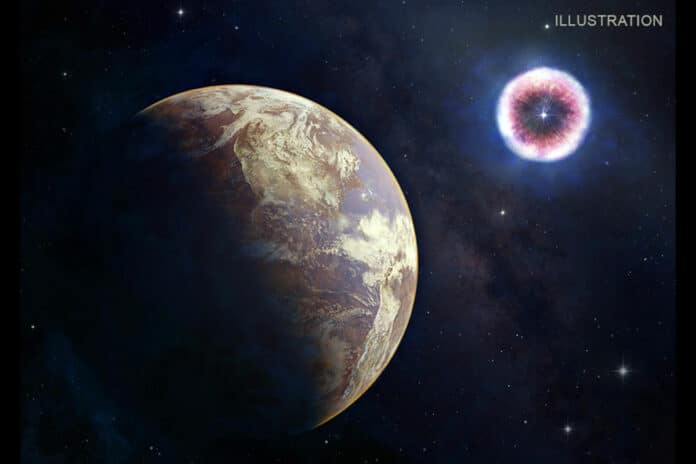Supernovae (SNe) are celestial explosions of energy that have long inspired studies into their possibly dangerous repercussions on the Earth and similar surroundings. The main emphasis of much of this research has been the atmospheric damage brought on by the rapid arrival of ionizing photons within days or months of the original outburst, as well as the high-energy cosmic rays that arrive thousands of years after the explosion.
A new study from NASA’s Chandra X-ray Observatory and other X-ray telescopes reported that an exploded star could pose more risks to nearby planets than previously thought. This recently discovered danger is caused by an extreme X-ray phase that can harm planets up to 160 light-years distant from Earth’s atmosphere.
However, even these severe concerns do not fully list what might go wrong when a star explodes. Between these two previously noted threats, another one has been found by scientists. Supernovae always leave behind X-rays, but if the blast wave of a supernova hits a region of dense surrounding gas, it may cause an especially high dose to be produced that may appear months to years after the explosion and linger for decades.
Chandra, NASA’s Swift and NuSTAR spacecraft, the European Space Agency’s XMM-Newton mission, and Chandra’s observations of 31 supernovae and their aftermath served as the primary data sources for the computations in this most recent study. Examining these observations demonstrates that supernovae can have fatal effects on planets up to 160 light-years away when interacting with their environs.
Ian Brunton, a former Illinois undergraduate now at NASA Johnson Space Flight Center and the first author of the study, said, “If a torrent of X-rays sweeps over a nearby planet, the radiation would severely alter the planet’s atmospheric chemistry. For an Earth-like planet, this process could wipe out a significant portion of ozone, which ultimately protects life from the dangerous ultraviolet radiation of its host star.”
Illinois undergraduate student Connor O’Mahoney, a co-author of the study, said, “The Earth is not in any danger from an event like this now because there are no potential supernovae within the X-ray danger zone. However, it may be the case that such events played a role in Earth’s past.”
Strong evidence suggests that supernovae happened near Earth between two and eight million years ago, including the discovery of a radioactive kind of iron in several areas throughout the world. According to scientists, the distance between these supernovae and Earth was between 65 and 500 light-years.
The “Local Bubble,” a bubble of low-density hot gas that is still expanding and is encircled by a shell of cold gas that spans around 1,000 light-years, contains Earth. The Local Bubble appears to have evolved from a burst of star formation and supernovae around the bubble’s center some 14 million years ago based on the outward expansion of stars on its surface.
The scientists say that although this data does not directly link supernovae to any specific mass extinction event on Earth, it does show that cosmic explosions have impacted our planet throughout its history.
Scientists noted, “While this evidence does not tie supernovae to any particular mass extinction event on Earth, it does suggest cosmic explosions have affected our planet over its history.”
“Although the Earth and the solar system are currently in a safe space in terms of potential supernova explosions, many other planets in the Milky Way are not. These high-energy events would effectively shrink the areas within the Milky Way galaxy, known as the Galactic Habitable Zone, where conditions would be conducive for life.”
The lack of X-ray observations of supernovae, especially those that interact with their environment substantially, led scientists to conclude that long-term monitoring of interacting supernovae might be beneficial.
Astronomy professor Brian Fields, who directed the Illinois portion of the study, said, “Further research on X-rays from supernovae is valuable not just for understanding the life cycle of stars, but also has implications for fields like astrobiology, paleontology and the earth and planetary sciences.”
Journal Reference:
- Ian R. Brunton et al. X-Ray-luminous Supernovae: Threats to Terrestrial Biospheres. The Astrophysical Journal. DOI: 10.3847/1538-4357/acc728
